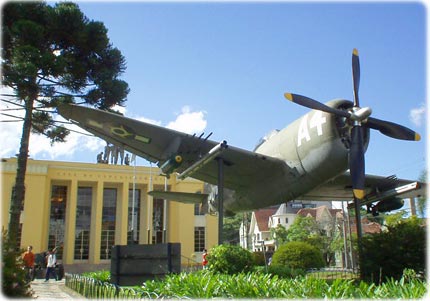-
Modelers Alliance has updated the forum software on our website. We have migrated all post, content and user accounts but we could not migrate the passwords.
This requires that you manually reset your password.
Please click here, http://modelersalliance.org/forums/login to go to logon page and use the "Forgot your Password" option.
- Home
- Forums
- Current Campaigns
- Past Campaigns
- Finished Campaigns
- 2020 Campaigns
- Modeling for Competition Homework
You are using an out of date browser. It may not display this or other websites correctly.
You should upgrade or use an alternative browser.
You should upgrade or use an alternative browser.
P-47D Thunderbolt - Academy - 1/48
- Thread starter Arturius
- Start date
Arturius
Active member
Dear Art.
Hope to see a great job!...
Luiz
P.S : Vais fazer Fabiano :hmmm ...?
I'll do my best Luiz, the P-47D are the most emblematic plane in our history. When true heros, wrote in blood the birth of our Air Force. I will do everthing that I can to honor their memory.



I pretend to do de A4 or D4. I'm in doubt.
The A4 is here in Curitiba:



Arturius
Active member
Hello mates!
Sorry to be out for so long, but busy times were hard. But now I'm back to workbench, for how long I don't know
Well, I in doubt with my homework, the research.
So finaly I got one day to take the pics, here go some of them:

Frontal view

Left side of engine, marks and patch.

 Detail of wing, back view.
Detail of wing, back view.
 A back view
A back view
continue...
Sorry to be out for so long, but busy times were hard. But now I'm back to workbench, for how long I don't know
Well, I in doubt with my homework, the research.
So finaly I got one day to take the pics, here go some of them:
Frontal view
Left side of engine, marks and patch.
continue...
Arturius
Active member
Some history, forgive me if have some language error's, the site it's in portuguese and I use the google to translate:
Want to read all about? here:
http://www.sentaapua.com.br/thunderbolt/index.htm
Cheers
Art
The Model "D"
Until the middle of 43, had only 602 Thunderbolts operating on the front line, all "C" models - the "B" had been with the USAAF for evaluation only and never engaged in combat.
It was on that date, with the arrival of the new model "D", the P-47 has become widely used by Allied Forces. The model "D" was the standard Thunderbolt with 12,610 units produced - for a total of 15,683, or 80.4% - of twenty variants.
Basically, the new model "D" has been improved in its two strengths:
1) strength - improved shielding the cabin and recubriram tires with extra layers of canvas to prevent overflows during takeoff with maximum load on any type of floor.
2) speed - engine with water injection, resulting in increased power to escape velocity.
In the early models (B, C and D to the variant 22-RE) the roof was sliding and the upper rear cowling going to the helm - were called razorback. From Lot D-25-RE (manufactured in Farmingdale) and D-26-RA (manufactured in Evansville) began to use the cockpit bubble type. The P-47 project received several other changes throughout his life.
In D-15-RE / RA variants, the range problem was solved with wings with support for 227 kg of bombs or drop tanks of 568 liters of fuel beyond the ventral charge - from 454 kg bomb or alijável tank 757 l. Configured with three tanks of fuel, the P-47 escorted the equadrilhas bombers to target anywhere in the German territory and, in return, the unused ammunition was used against targets of opportunity (trains, troops on the march, etc. )
In July 1943, the P-47 received the cockpit bubble greatly improving the driver's visibility. But with the loss of the fairing behind the driver because the new cabin, appeared stability issues that were only resolved with the installation of a flap that began just behind the cabin and ended at the helm. The first batch to receive this change was the D-27-RE.
The last substantial change in the model "D" in variant was 35-RA which received five attachment points for 12.7 mm rockets on each wing.
Want to read all about? here:
http://www.sentaapua.com.br/thunderbolt/index.htm

Cheers
Art
I can't read enough about Jugs...
Similar threads
- Replies
- 11
- Views
- 3K
- Replies
- 0
- Views
- 471

